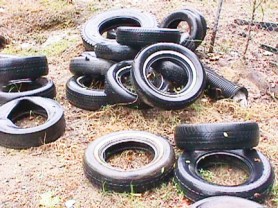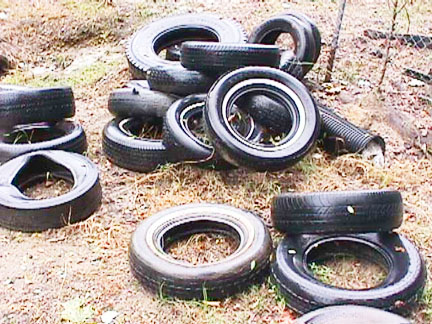
The Minister said that medical treatment is not the issue, because doctors treat patients with dengue but it is prevention which can be aided by the average citizen.
He noted that, to aid prevention, the health sector has made available different resources that can be accessed free of cost.

We can add that the old tyres are guaranteed to last for one day. The Guyana National Bureau of Standards inspects all second-hand tyres before they enter Guyana. Those that have some life in them are accepted but tyres that are damaged are brutalised so that they cannot be used.
However these tyres are allowed to enter so that the importers can claim for VAT. The GNBS reported that an entrepreneur was cutting these damaged tyres to make them available for use in other areas. However it is noted that this person seems to have relinquished his interest in this project. It is not that consumers have a love for old tyres.
They just do not know what to do with them. They are warned not to throw them into trenches and drains, and the only use they can make of them is for growing plants. The problem remains and we should together think of a solution. It is understood that there is a machine that chops tyres and makes them available for road building. A ministry should help resolve this problem.
The release from the Ministry of Health explains that the mosquito Aedes aegypti is responsible for causing dengue fever, and although it may feed at any time, the insect bites humans only between a few hours after dawn until an hour or so after sunset. The mosquito’s breeding area is in stagnant water.






